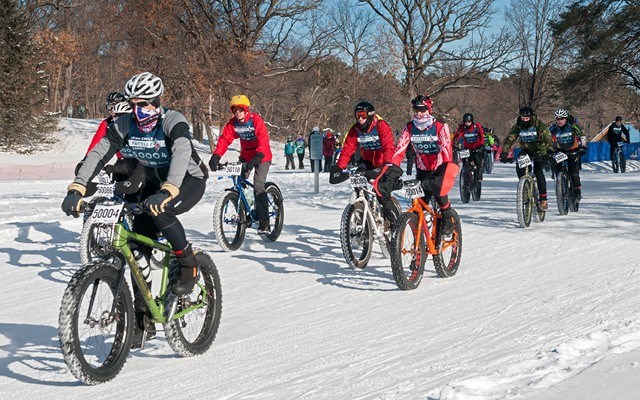CANMORE, Alta. — Fat-tired bikes will be restricted to ungroomed single and double-track trails at the Canmore Nordic Centre, putting groomed trails off limits at the site of the 1988 Winter Olympics cross-country ski competition.
Fat bikes have extra-wide tires and thick, sturdy frames that allow them to handle snowy conditions.
Alberta Parks told the Rocky Mountain Outlook that it's a growing sport, and so some trails needed to be designated for its use.
Brothers survive, but had feared the worst
TELLURIDE, Colo. — Two brothers skiing in the backcountry near Telluride before Thanksgiving both had luck on their side. First, one skied down a 30-degree slope, triggering a "massive slide." From above, his brother watched his sibling being swept out of sight.
Skiing down to look for his brother, he triggered another slide. Alarmed by the conditions, he abandoned the search and then retreated to a place from which he could summon a rescue team.
But, in fact, though the first brother had tumbled 335 metres, but when the snow quit sliding, his face and an arm were exposed. Still, it took him about 15 minutes to dig himself out of the avalanche debris. He then began searching with his beacon for his brother, whom he also thought was dead.
But both had survived, reports the Telluride Daily Planet, and they now have a story that few could match — or would want to match.
Talking about being 100 per cent fossil-free
BANFF, Alta. — Banff, the municipality in Banff National Park, has started talking about setting a goal of becoming totally reliant on non-fossil fuels by 2050.
Chad Townsend, the town's environmental coordinator, said the goal is doable, if ambitious. This goal, if adopted by Banff's elected officials, could also include transportation and heating, in addition to electricity.
No place in the modern world has achieved this goal so far, although many towns and cities have started embracing it. Vancouver, B.C., recently adopted a 100-per-cent renewable energy goal by 2050, and the college town of Fort Collins, Colo., adopted something similar.
Eliminating fossil fuels from the electrical mix remains challenging enough for most communities. Aspen joined two other smaller towns and cities in the United States this summer when it completed a 100 per cent renewable portfolio. The Aspen utility, however, only services half to two-thirds of the load in the community of 6,000 and none to the ski area itself.
The Rocky Mountain Outlook reports that town officials remain non-committal, but are considering spending $40,000 on developing a path to define how to get there. Clearly controversial would be expansion of hydro-electricity, particularly if it requires dams. One dam has been removed from within Banff National Park, and Councillor Stavros Karlos said he's ready to see more dams blown up after watching DamNation, a documentary that challenges the systems of large dams in the United States.
About half of Aspen Electric's renewable power comes from turbines installed on existing dams. A recent proposal to recreate a hydroelectric generator on a local creek that had delivered electricity to Aspen from 1885 to 1962 failed because of community pushback. Instead, Aspen secured its remaining power from wind farms on the Great Plains, hundreds of kilometres away in Nebraska and South Dakota.




